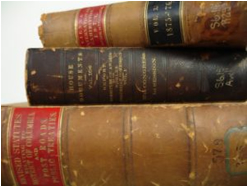
Under Nova Scotia’s Pension Benefits Act, pensions can be divided differently depending on the applicable scenario:
- If the pension is not in pay, the non-member spouse becomes a limited member of the plan and receives their portion of the pension when the member retires or terminates membership in the plan. When the member retires, the non-member spouse (the “limited member”) will receive their portion of the pension; this pension is actuarially converted and paid for the lifetime of the limited member (i.e. it does not end when the member dies but will continue for as long as the non-member lives). The non-member spouse may have the option of an immediate lump sum transfer from the pension plan to a locked-inretirement vehicle when the member terminates or retires; this option will only be available to the non-member spouse if the pension plan permits the member to transfer a lump sum transfer from the pension plan (i.e. many plans do not permit lump sum transfers once a member becomes eligible for retirement).
- If the pension is in pay, the non-member spouse will receive their portion of the pension payment directly from the administrator. Please note that this pension is only paid in accordance with the form of pension elected by the member at retirement, and consequently, may not continue after the member’s death.
The Nova Scotia Public Service Superannuation Act, Teachers’ Pension Act, Member’s Retiring Allowance Act and Judges of the Provincial Court Act are all exempted from Nova Scotia’s Pension Benefits Act. This means that the pension division options on marriage breakdown described above do not necessarily apply to members of these pension plans (i.e. public servants and teachers); however, the pension division options provided to teachers and public servants are similar to the options desribed above.
Nova Scotia’s Pension Benefits Act only permits the division of the pension earned from the date of marriage (or after 3 years of cohabitation) to the date of separation. Under Nova Scotia’s Matrimonial Property Act, however, as the result of a decision by the Court of Appeal in Morash v. Morash (2004), the entire pension may be considered to be a matrimonial asset (both the pension earned prior to marriage and during marriage). For a plan member with service prior to the date of marriage, one possible way to settle the pre-marital pension is to buy-out the non-member spouse using other assets (since the pre-marital portion of the pension will not be divided by the pension plan administrator); in this situation, the pension will need to be valued by an actuary in order to determine the fair value of the pre-marital portion of the pension (click here for more information).
Note that federally regulated pension plans (i.e. banks, airlines, rail) may not offer the above pension division options and may only allow the division options available under the federal Pension Benefits Standards Act. Under the federal Pension Benefits Standards Act, up to 100% of the benefits earned during the relationship can be assigned to the spouse. If a portion of the member’s pension benefits are assigned to the spouse, the non-member spouse is deemed to have been a member of the pension plan and have terminated their membership in the plan. Most federal pension plans have established administrative policies as to how the non-member spouse can receive their share of the pension, however, typically they will have the choice of an immediate lump sum transfer or a deferred pension in the plan if the member is not retired and they will receive a pension from the plan if the member is retired (the plan may offer a lump sum option and they may convert the spouse’s pension to one payable for their lifetime). For more information, click here.
Federal government pensions are divided in accordance with Pension Benefits Division Act which only allows an immediate lump sum transfer from the pension plan to the non-member spouse. For more information, click here.
